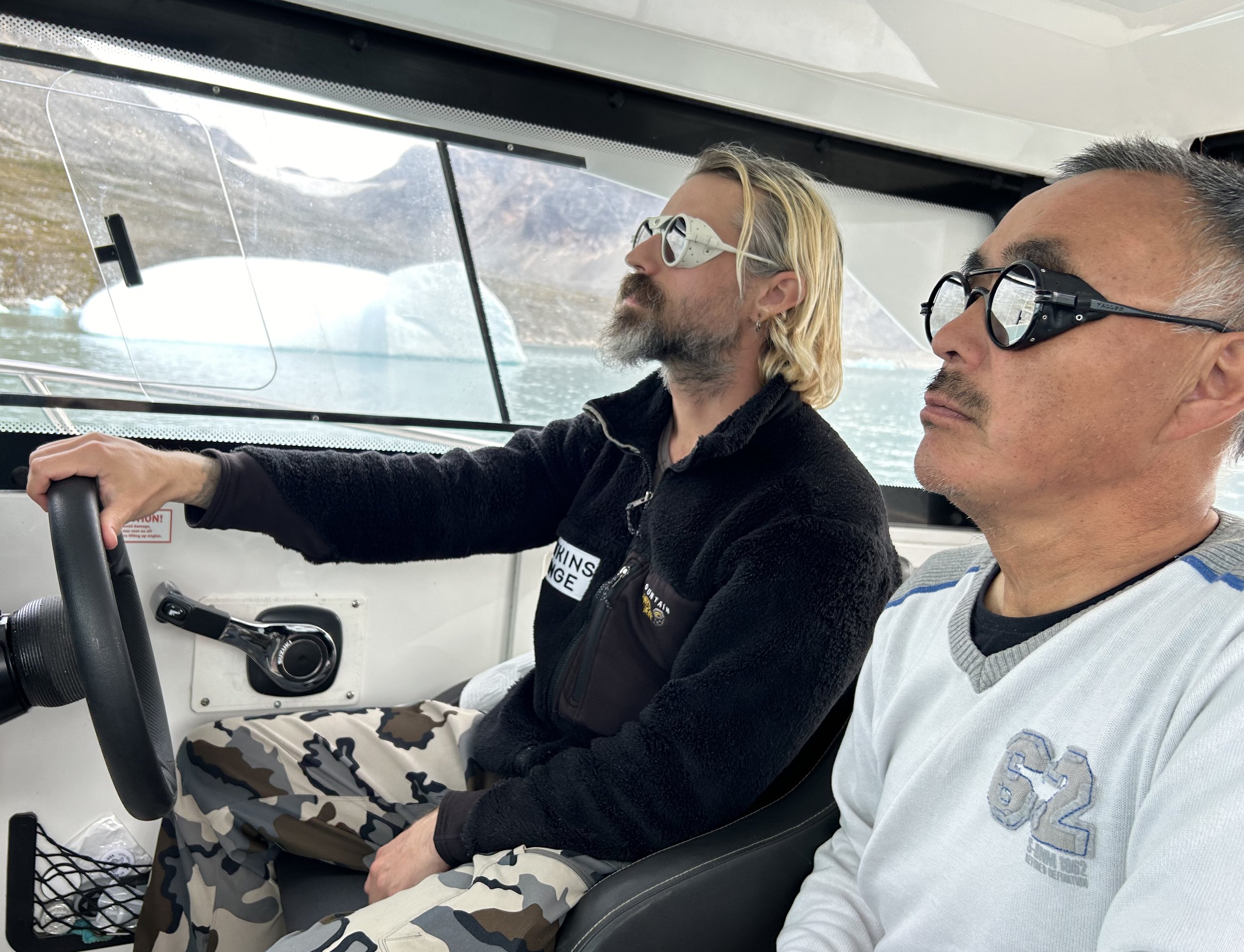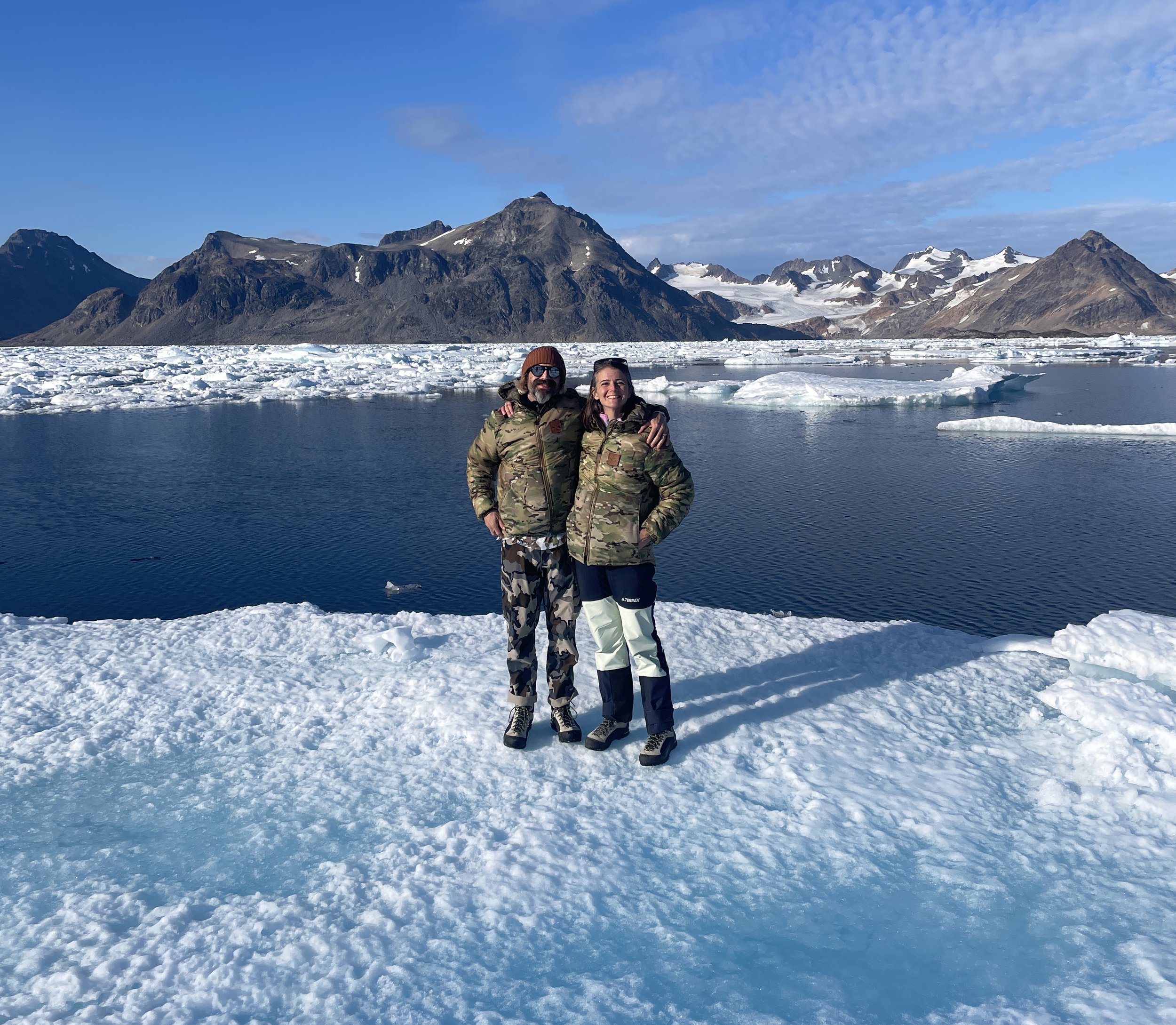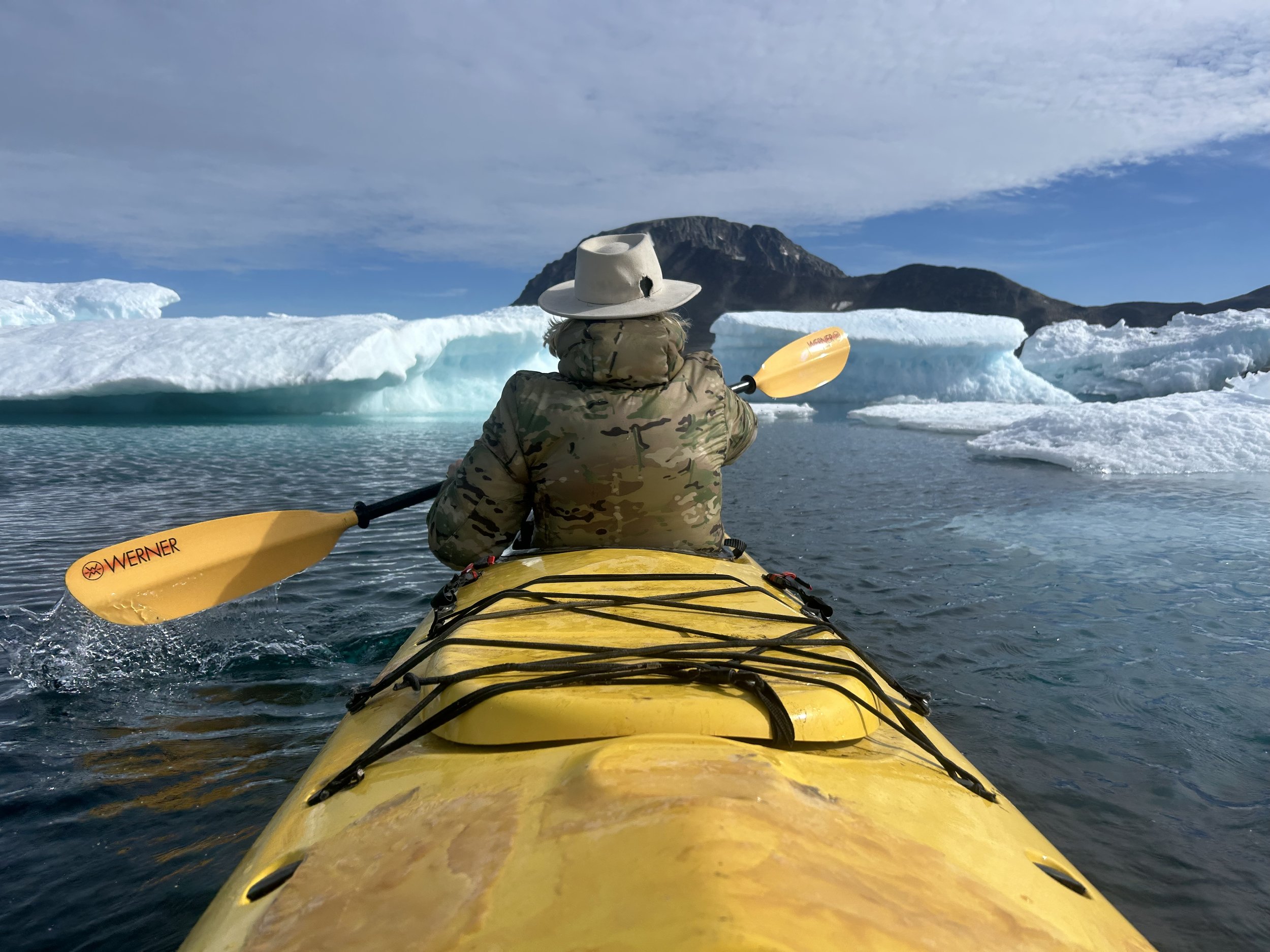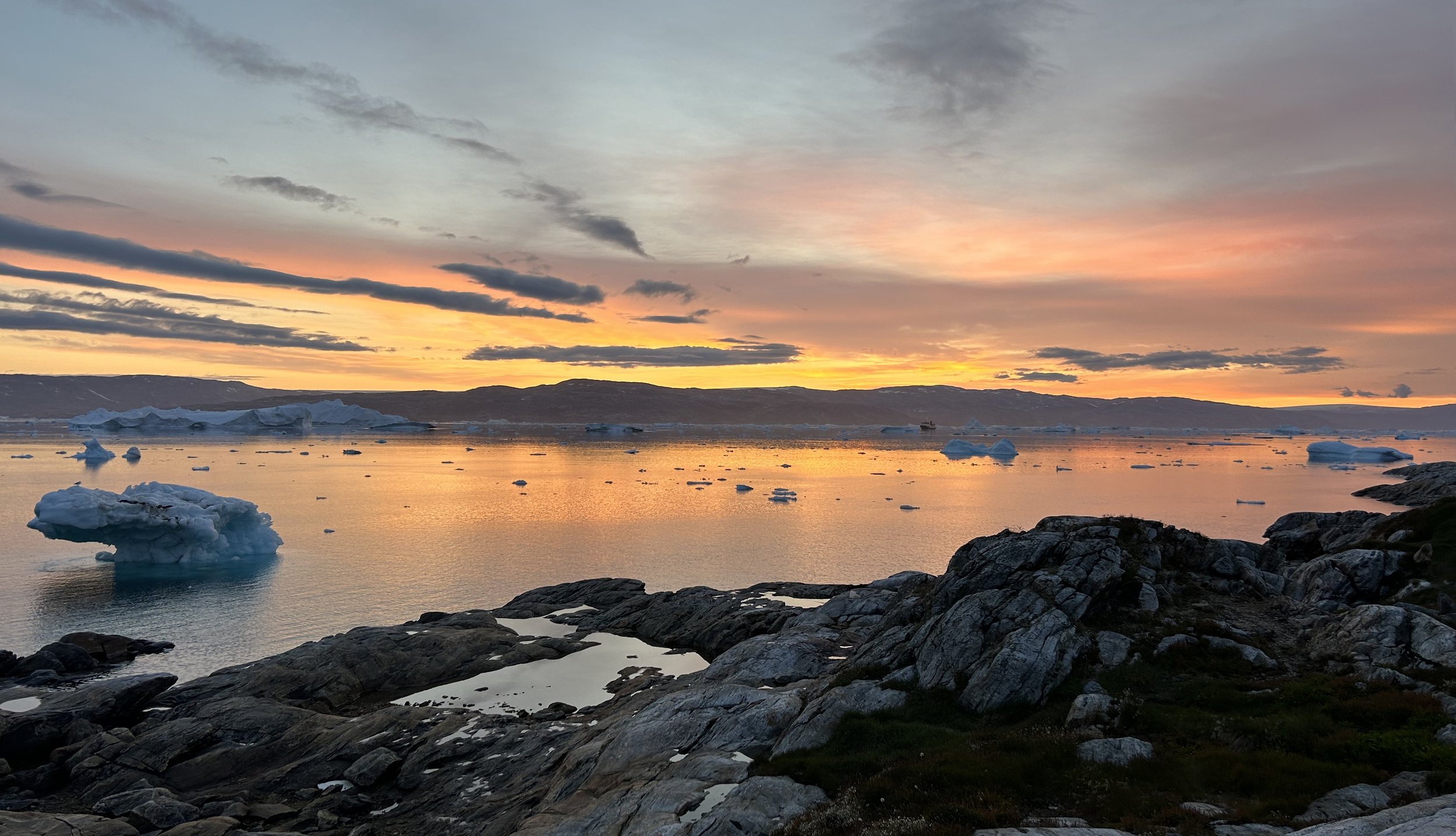
After years of planning, we visited Greenland in August 2024. The expedition had a rocky start when we got trapped in Iceland for two days due to a hurricane hitting Greenland, but as Jeremy Scott (JM Scott's son) said when I updated him, "Par for the course".
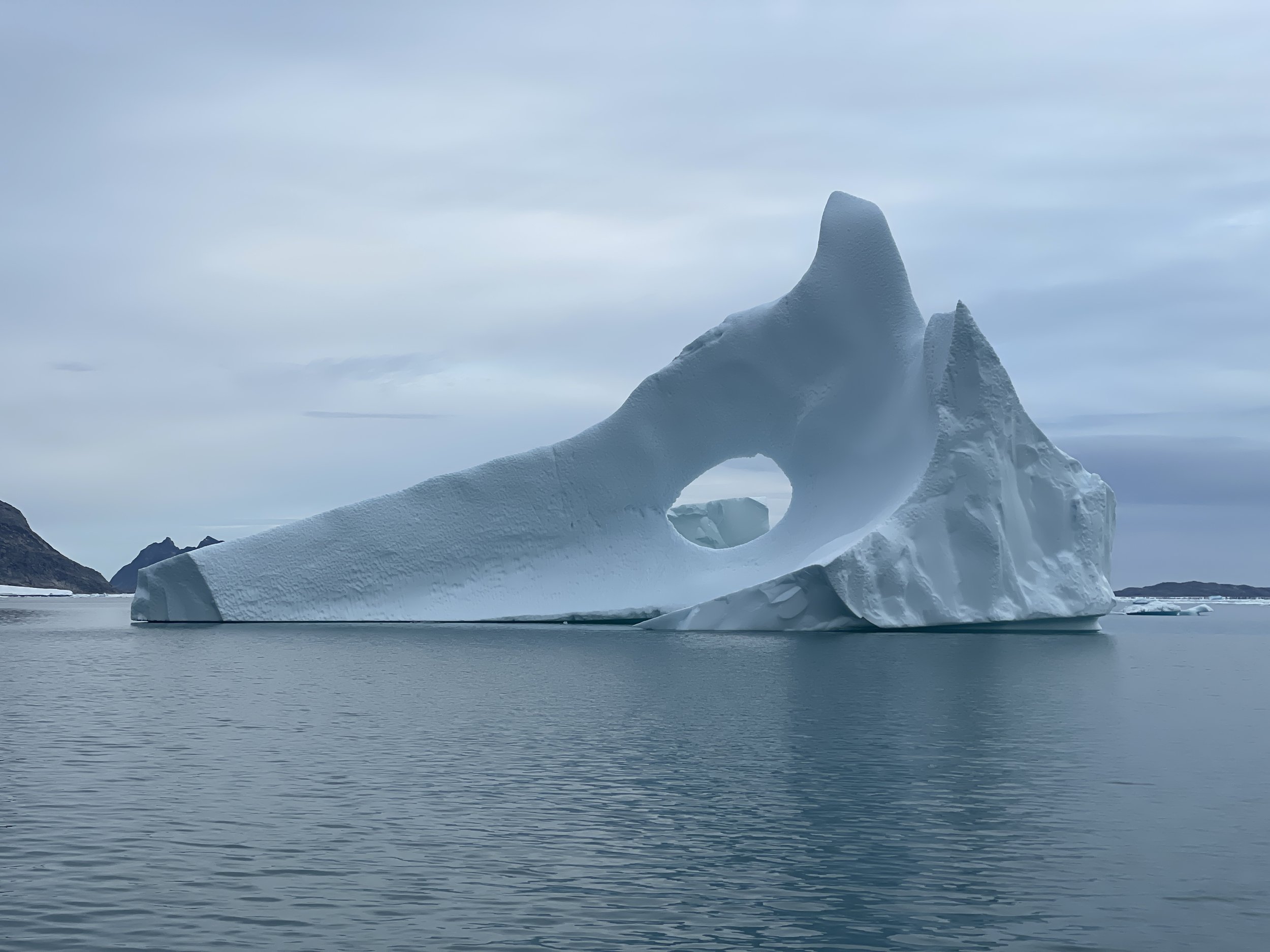
Our guide was Bendt Abelson, who is the grandson of Kidarsi who helped Gino on his expedition.
Greenland was encountering much more sea ice than usual at this time of year, so we were warned that travel would be difficult. We wasted no time and headed straight for the base camp of the British Arctic Air Route Expedition.
Using the old photos and maps we were able to locate the base camp area and spent the night next to where the men slept in 1930.

From the base hut we took our first journey onto the ice cap. Unfortunately due to the receding of the ice cap we were not able to follow the 1930 ascent so took an approach from the west.
The crevasses were numerous but luckily due to no recent snow they were easy to spot and navigate.
It was impossible to understand how the men travelled this terrain in blizzard conditions with sleds weighing up to 600 pounds and no modern equipment to aid them like we had.

All of our travel was by foot or boat. We headed north to try and reach Tuttilik (known as Lake Fjord by the original team) where the 1932 second expedition set up their base camp.
The satellite images showed very condensed sea ice around Tuttilik so Bendt warned us that it was going be a tough journey.
His son had been in the area a few days before but was forced to turn back due to sea ice, he told us it would be "suicidal" to try and get there... Luckily Bendt was more optimistic than his son so we headed off with extra fuel just in case.

Unfortunately the sea ice was worse than Bendt expected and it wasn't long before we hit several dead ends. After hours of trying different routes and almost getting stuck a couple of times we decided we needed to head for the coast for the night. We moored in Sermiligaaq where we met a local fisherman called Gedion whose grandfather knew Gino.
Despite the disappointment of not reaching Tuttilik this turned out to be a huge bonus. We interviewed Gedion who had fantastic stories that his grandfather had told him about Gino and Freddie Spencer Chapman. He even said that Gino visited his grandfather after Gino died. Bendt used the word "Haunted" but I hope it was just a bad translation and it was a more friendly visit than that. I'm generally skeptical of these sorts of things but talking to the curator of the Kulusk museum earlier in the trip had taught me to be more open minded. Inuit religion is Shamanism and they believe that everything has life and that spirits are everywhere. After seeing the life in the movement of the ice and wind over the trip, it was hard to ignore this idea.
The next morning we heard that Narwhal hunters were traveling to a fjord north of Tuttilik so Bendt asked if we could go with them. The locals prefer to travel as a convoy in thick ice, so if a boat gets trapped by ice, they can be rescued by another.

The thick sea ice created a beautiful landscape but caused us a lot of problems. We reached dead end after dead end and had to zig zag back and forth for hours looking for a clear path through. In the process we lost the narwhal hunters and were on our own. The boat was taking some heavy impacts so we had to check the hull for leaks regularly.
The next few hours got fairly dangerous, we were trapped several times and had to wait for the pattern to change to continue. On the last of these occasions the boat was quickly surrounded by ice and there was no foreseeable route out, Bendt was very concerned and said there was a chance we may have to abandon the boat and wait on an ice floe in case the boat was crushed. This was not ideal as the ice floes have a tendency of breaking up or flipping over with no warning.
It was an incredible scene surrounding the boat, there was no water in sight, just a slowly undulating landscape of ice, as far as you could see. Fortunately a route became visible and Bendt used the boat as a battering ram to get us out. Bendt's Grandfather, Kidarsi, used to live near Tuttilik and helped Gino on his second expedition, so Bendt was as excited as us to try and get there. The disappointment was heavy in his voice when he told us we would have to go back to shore and try again if the ice changes.
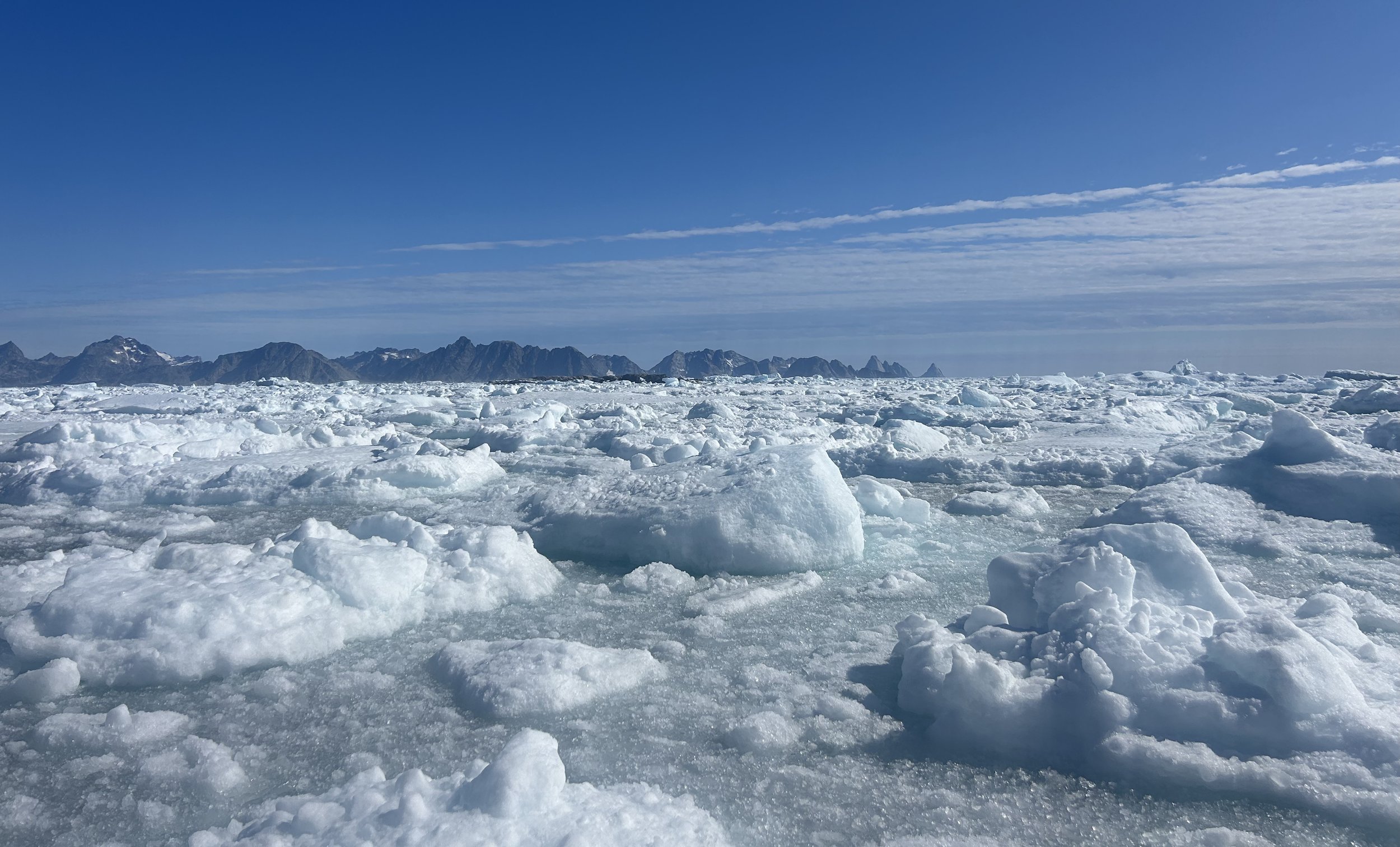
It was a relief to get back to open water and we took advantage of the evening light, it doesn't get dark until after midnight at this time of year this close to the arctic circle.
We found an ice floe to conduct an interview with Bendt. It was the most stunning interview backdrop I've ever seen, and one of the highlights of my filming career.
Bendt had incredible tales from his grandfather about Gino, and I learned a lot about Inuit life in the 1920's and 1930's.
Bendt also insisted we take a few beers onto the floe for the interview so it’s hard to imagine a better atmosphere.

The forecast was showing even more concentrated sea ice the next day so we decided to spend the day filming in town.
We met some hunters who had just killed a seal and were on their way to butcher it and feed the dogs, they invited us to watch and film.
Seal was and still is extremely important to Inuit life. They keep the best meat for themselves and the rest is used to feed the dogs. Dogs are a large part of survival in Greenland, the sea is frozen over in the winter and dog sled is the best way to travel.

With the forecast for the next day showing no changes in sea ice we spent the day kayaking. Gino learned the skill on his first trip to Greenland and became legendary at it.
He brought his kayak back to England to introduce the sport to the rest of Europe. He is seen by those in the kayaking community as the godfather of European kayaking.
Luckily modern kayaks are a lot easier and safer than the wood and seal skin version Gino had because Clarissa and I had no idea what we were doing.
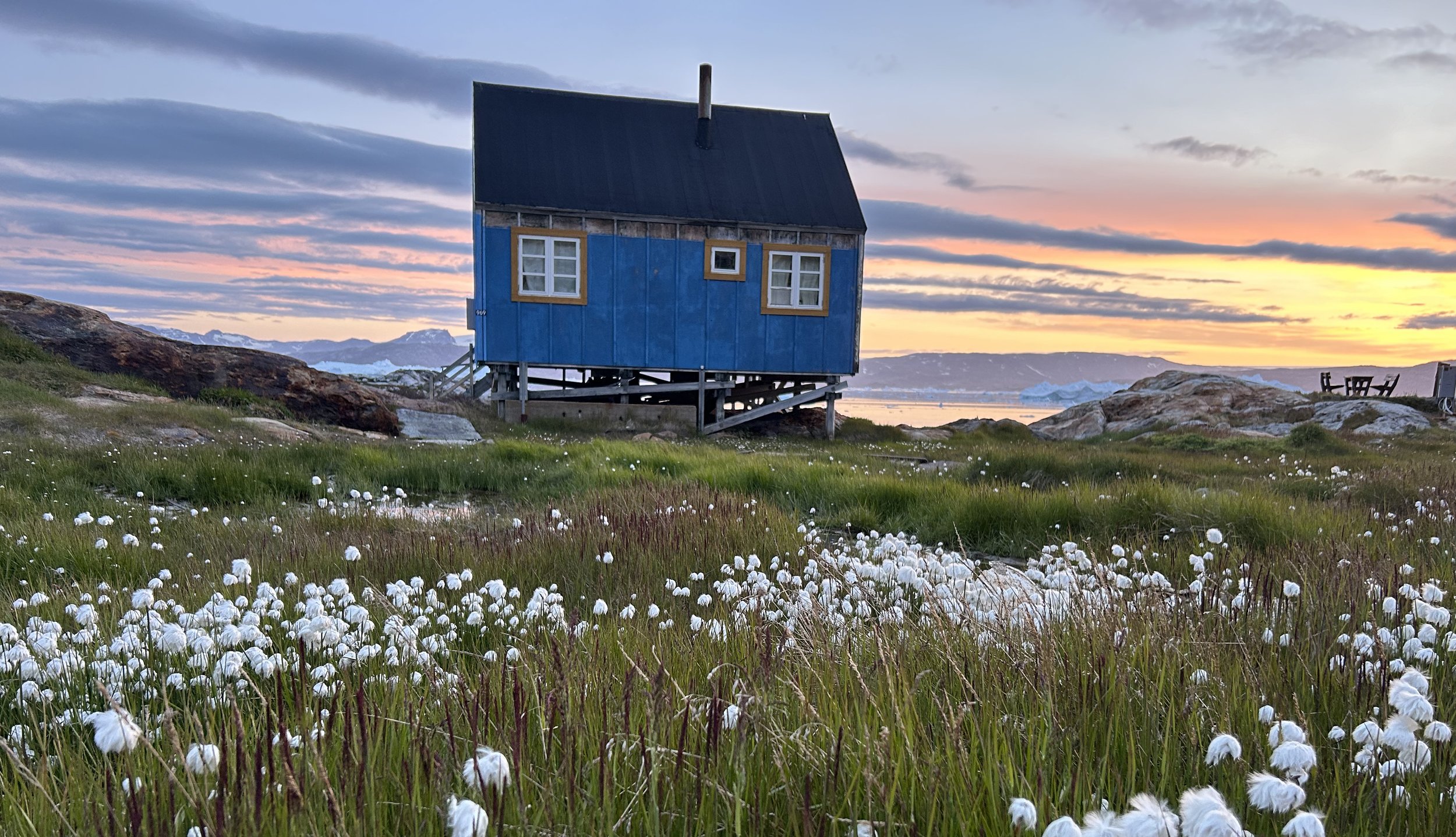
The next day was our final day to try and reach Tuttilik, but unfortunately the satellites were showing even more condensed sea ice than the last few days.
With the hopes of reaching the second base camp sadly gone, we spent the last day exploring an ice cave. Seeing the Greenland ice sheet from the inside was awe inspiring.
It made August Courtauld’s solo shift at the weather station even more unimaginable. The weather station got buried by snow with August inside, he was no longer on the ice sheet but within it. Trapped there, he became a part of the Greenland ice sheet, which is almost 2 miles thick.
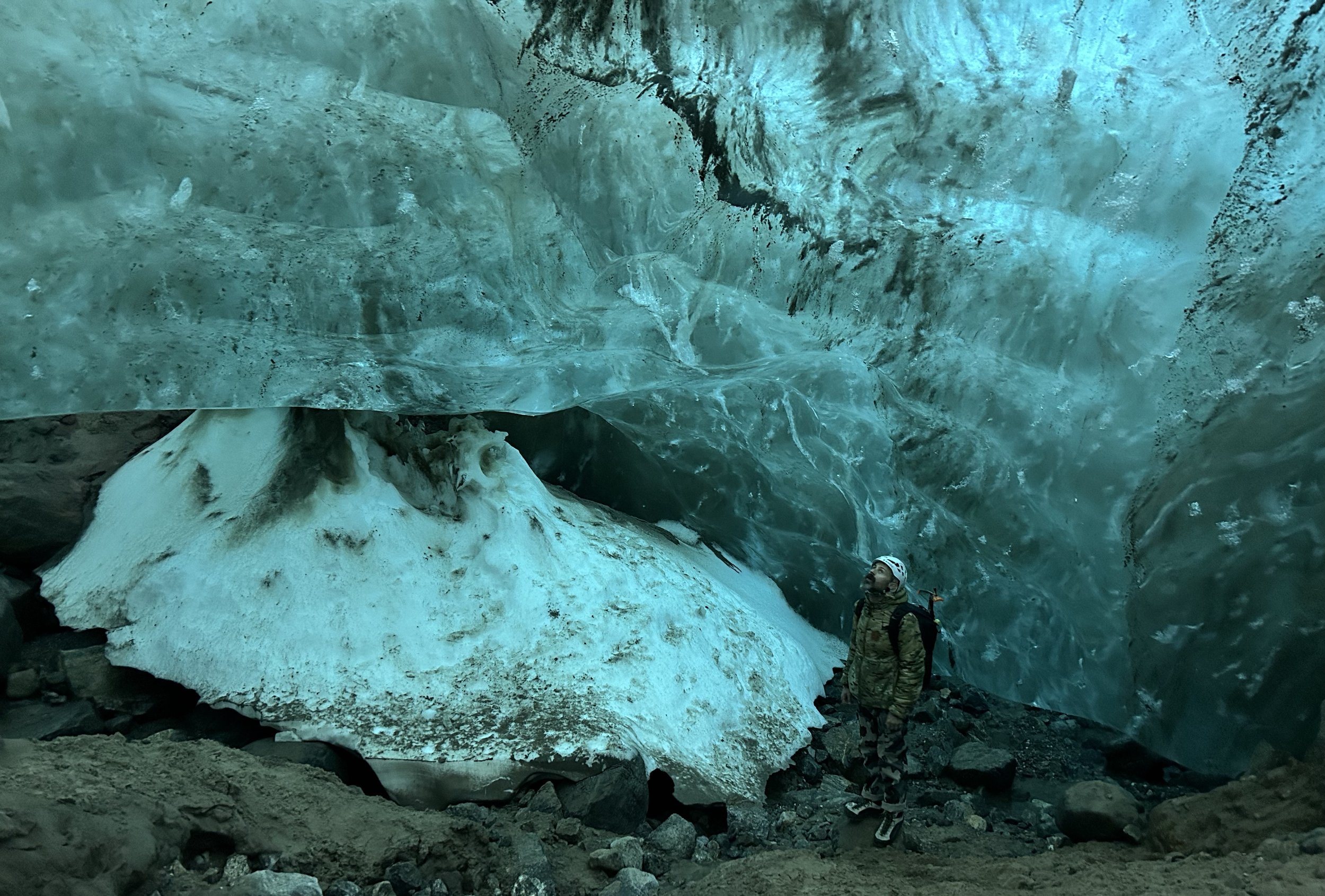
Despite not reaching the second base camp the trip was a huge success. The footage we captured was spectacular and put the finishing touches to the documentary.
Greenland is the most beautiful land I've ever seen, and it was clear why my great uncle became so entranced by it.






